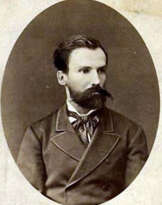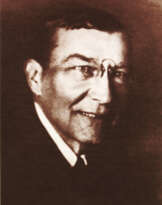Grigorii Grigorevich Gagarin (1810 - 1893)

Grigorii Grigorevich Gagarin
Prince Grigorii Grigorevich Gagarin (russian: Григорий Григорьевич Гагарин) was a Russian painter, illustrator, art researcher, and architect.
He was born into the family of a diplomat, Prince Grigorii Ivanovich Gagarin (1782-1837), who was soon sent to Italy to fulfill the duties of ambassador. Gagarin's house in Rome was the center of cultural life of the Russian diaspora, Alexander and Karl Brullov, Bruni, Shchedrin, Basin, Galberg were regular guests there.
Grigorii early showed a talent for painting, he took lessons from Brullov, after trips to the East he became fascinated by the art of Byzantium. Later, during his service in the Caucasus, he painted in this style the Sion Cathedral in Tiflis. Gagarin also successfully illustrated works of Russian writers, including Pushkin's poem "Ruslan and Lyudmila" and "The Tale of Tsar Saltan", in 1845 he published in Paris an album "Costumes of the peoples of the Caucasus" of 66 hand-colored lithographs.
In 1841 Gagarin was enlisted in the military service and participated in campaigns in the Caucasus. In addition to military duties, he worked a lot for the needs of the Caucasian cities. In Tiflis on his project was built a theater, he restored frescoes in the Sion Cathedral and in old Georgian monasteries.
In Russia, Gagarin's social circle included Zhukovsky, Pushkin, Odoyevsky. Grigorii Gagarin did a lot as vice-president of the Imperial Academy of Arts (1859-1872), trying to reform it in the spirit of the time, founded the Museum of Antiquities. In 1880, Gagarin was made an obra gofmeister of the court of His Imperial Majesty.
| Date and place of birt: | 15 may 1810, St. Petersburg, Russia |
|---|---|
| Date and place of death: | 18 january 1893, Châtellerault, France |
| Nationality: | Russia, Russian Empire |
| Period of activity: | XIX century |
| Specialization: | Architect, Artist, Illustrator, Painter |
| Genre: | Genre art |
| Art style: | Academism, Romanticism, Orientalism |































